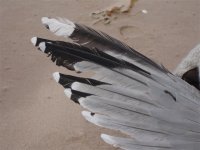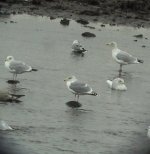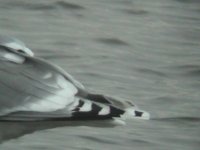Birdspotter
Well-known member
Hi all,
Whilst looking at the local Gull flocks this winter I have really got into looking for and differenciating between argentatus and argenteus Herring Gulls.
What I want to work out is what percentage of Herring gulls are argentatus, the dark mantled northern birds showing lots of white in the primarys are no problem its the more paler mantled southern populations that are causing me problems.
In Gulls theres a plate(p27) on wing tip patterns showing 5 argentatus and only one argenteus yet some of the birds i looked at today showed none of the characters on this page.
For example two of the birds showed a large white tip to p10 with a narrow black band across it, reading the text Olsen says that some argentatus show this pattern, clearly then more than 5 wing tip patterns occur, but what about argenteus the plate only shows one surely they have more patterns than this.
Are there any good web sites showing only wing tip patterns on offer ?
cheers
ps had two argentatus Herring Gulls at Musselburgh this afternoon feeding a 1st w, lots of begging and food regurgitation going on,dont think I have seen this behaviour in February before.
Whilst looking at the local Gull flocks this winter I have really got into looking for and differenciating between argentatus and argenteus Herring Gulls.
What I want to work out is what percentage of Herring gulls are argentatus, the dark mantled northern birds showing lots of white in the primarys are no problem its the more paler mantled southern populations that are causing me problems.
In Gulls theres a plate(p27) on wing tip patterns showing 5 argentatus and only one argenteus yet some of the birds i looked at today showed none of the characters on this page.
For example two of the birds showed a large white tip to p10 with a narrow black band across it, reading the text Olsen says that some argentatus show this pattern, clearly then more than 5 wing tip patterns occur, but what about argenteus the plate only shows one surely they have more patterns than this.
Are there any good web sites showing only wing tip patterns on offer ?
cheers
ps had two argentatus Herring Gulls at Musselburgh this afternoon feeding a 1st w, lots of begging and food regurgitation going on,dont think I have seen this behaviour in February before.






